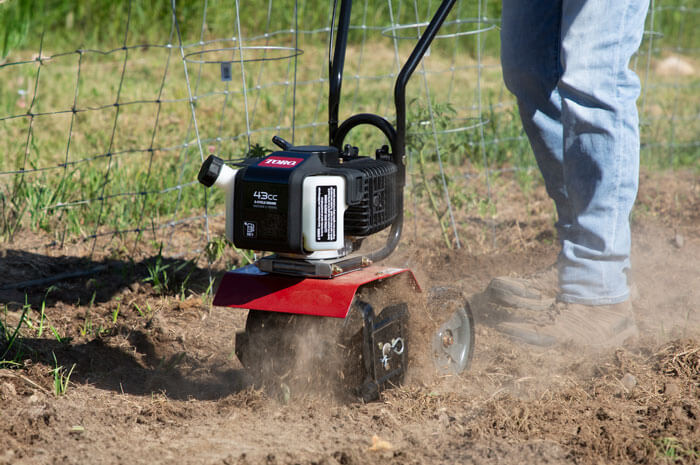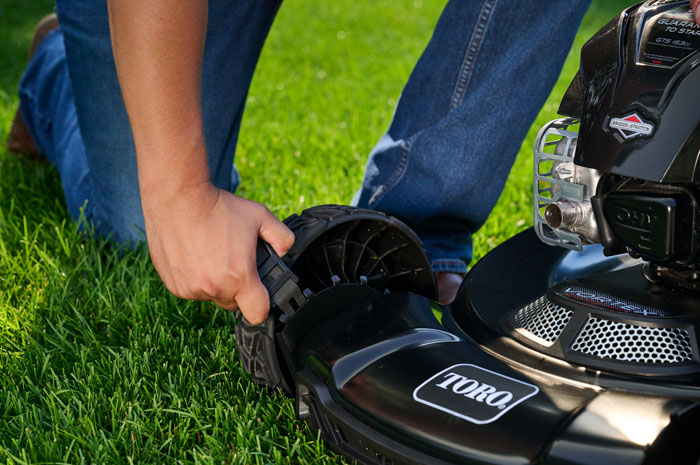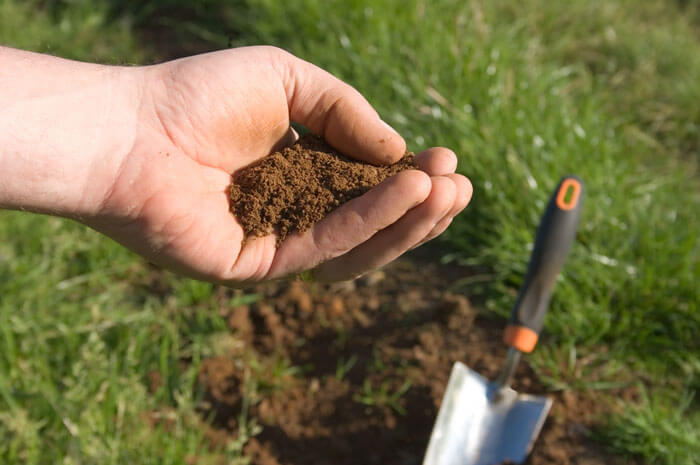
If the earth on your property is sticky and thick then you have clay soil. Clay soil is high in nutrients such as calcium, potassium and magnesium. However, the thick nature of clay soil makes it difficult for plants such as grass to develop healthy roots. It may also harden, making it difficult for water to reach the roots of the plants.
There are many reasons why it might be necessary for homeowners and landscapers to loosen clay soil for healthy planting. Below we’ve listed a few different ways to make your clay soil more workable. Different tactics will work better for different people, depending on your needs.
Soften Clay Soil Using Organic Matter and Tilling
Many people amend their soil by using organic matter. The goal is to lighten the soil texture, making it more workable for better gardening, landscaping and lawn care. Here are a couple of steps that you might want to take to loosen clay soil.
#1: Prepare the Soil For Amendments
Before adding any amendments, turn the soil using a shovel for smaller plots or a tiller such as Toro’s Front Tine Tiller for larger areas. Tillers can often be rented at local hardware stores if you aren’t looking to make an investment.
Before you start, make sure the soil you’re turning is relatively dry. Wet soil will not only be more difficult to till, but it will likely become compacted as well.
#2: Soil Amendments
While manure and compost are great amendments, you can also use the organic materials available to you. Add leaf litter, bark or even seaweed. While pine needles have been said to make the soil too acidic, it’s been proven that they make a fantastic organic amendment when they’re available.
When you’re finished tilling the amendments in, add two to three inches of mulch, ensuring that rain can reach the soil while also providing more top-down nutrients. Before adding any expensive, store-bought amendments, you may want to consider doing a soil test to find out what nutrients your soil requires.
#3: Stay Off The Soil
To prevent the soil from compounding, keep off the turned earth as much as possible.
How To Loosen Clay Soil Over Time
Tilling organic material into your soil isn’t a quick one-time fix. Homeowners with clay soil should consider adding amendments once a year, mixing more and more organic matter into the soil.
Gardeners may also want to use a cover crop. These plants will drop their leaves during winter, adding nutrients to the soil as the snow piles up. The roots of the plants will prevent the soil from compacting as much during the offseason. You can also use this tactic by trimming the tops off dead plants such as zinnias or marigolds rather than pulling them out when they’re done for the season. This way, the roots of the plants will slowly leach nutrients into the soil as they rot while also preventing the soil from compacting where they were planted.
Beyond Clay Soil: How Toro YardCare Can Help
Did you use any of these tactics on your soil? Did it help? Toro YardCare is all about learning how to make the landscaping and yard care process more efficient and reliable. You can turn to us for any of your landscaping questions.
Want some basic mowing tips? We got you. Curious about ornamental grasses? Come to us! Whether your questions are big or small, Toro YardCare is all about helping your side of the fence stay green.



